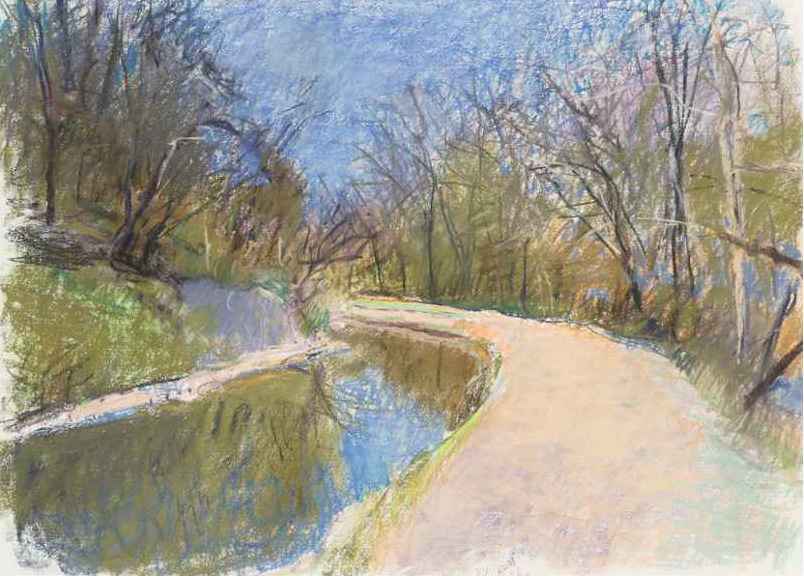 |
| Maybe now's a good time to take a walk. |
Yesterday, the governor of New Mexico issued what is basically a “shelter-in-place” order. (She didn't call it that, because the state doesn't use that term in its legislation, but the effect is the same.) All non-essential businesses are shut down. By the way, that includes plein air painting workshops like mine.
I saw the writing on the wall several days ago and cancelled all my spring workshops. Because the deposits I've already received are important to me, rather than give refunds, I offered students the option of taking a future
workshop or to put the credit toward
books,
videos,
online courses or
paintings. All of them understood my situation and agreed. I am very glad. As a self-employed worker, I don't receive a guaranteed weekly paycheck or unemployment insurance.
Right now, I am l living off my past work.
This includes, of course, my painting sales. Although many of us artists think that painting is as necessary to life as breathing, for non-artists, the purchase of a painting is purely discretionary. With the future now more uncertain that ever, painting sales will drop. Even if you're a collector who's getting a regular paycheck, you might soon be out of work temporarily—with no idea of when you might go back to work. You will be saving your dollars for essentials, not spending them on paintings.
I understand many other self-employed workers, not just artists, are in similar positions. I won't go into a long harangue, but self-employed persons are often discriminated against for bank loans, insurance and other benefits of society that the “not-self-employed” sometimes take for granted. Perhaps this will change, since the pandemic is reminding us that the number of self-employed workers is not insignificant. Besides artists, the self-employed includes journalists and other writers, freelancers for the entertainment industry, tradesmen, real estate professionals, farmers and ranchers, massage therapists—well, it's a long list.
As you might recall, I also write. On the bright side, perhaps with all the self-isolation, people might want to buy more magazines and books to fill the hours. I've already received one writing assignment this week, which will help.
I'm sure you have your own tale to tell. The pandemic is, of course, hardest on those who are sick and those who must tend the sick, but it's also hard on those who work in essential businesses that keep our society running: the farmers and truck drivers who maintain the supply chain, the store clerks who keep the shelves filled, the worker at the cash register who bags your goods. There are plenty of others. Again, it's a long list.
During this time of isolation, I am painting. I am writing. I am reading and watching movies. (
Downton Abbey, yet again?) I am taking long walks. But I am also trying to reach out to family and friends, and also to students via e-mail, the telephone and online chats. And I am planning projects for the future, as I firmly believe there will be a future.
How about you?








